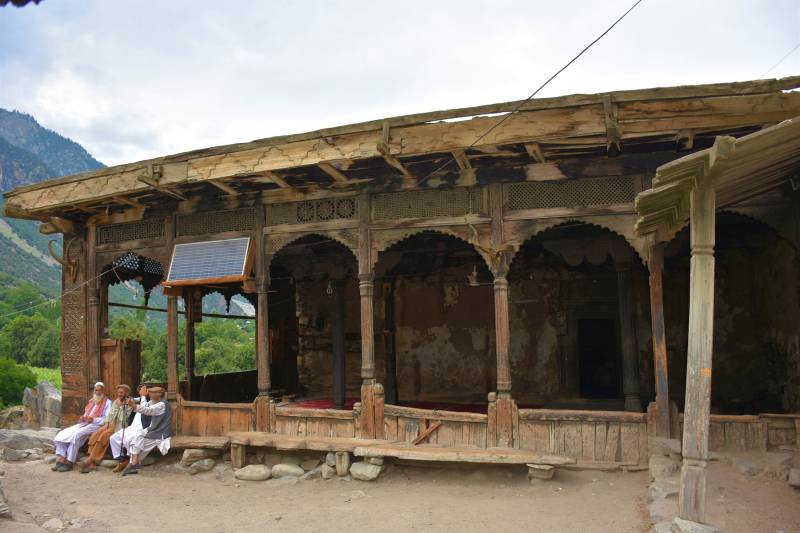
My several years of fieldwork from 2000 to 2020 in Darel and Tangir in Diamer district of Gilgit-Baltistan have revealed interesting facts about the religion, history and heritage of the valley. I visited the main villages in both the lower as well as upper valley for this purpose, and met many oral historians and village intellectuals to have discussions on these topics. As such, there are still some village intellectuals and oral historians in Tangir valley who know its history. I was interested to know their ancient religious ceremonies, practices, genealogies, how population dispersed from one settlement to others in the valley, when and from where immigrants came, how the social organization was formed, how each of the caste claim ownership rights, how caste relationships work, the position of craftsmen and particularly that of woodcarvers, the position of women and children in the valley, and above all, as to when the Islam came to this valley. In addition to these, I had so many other questions.
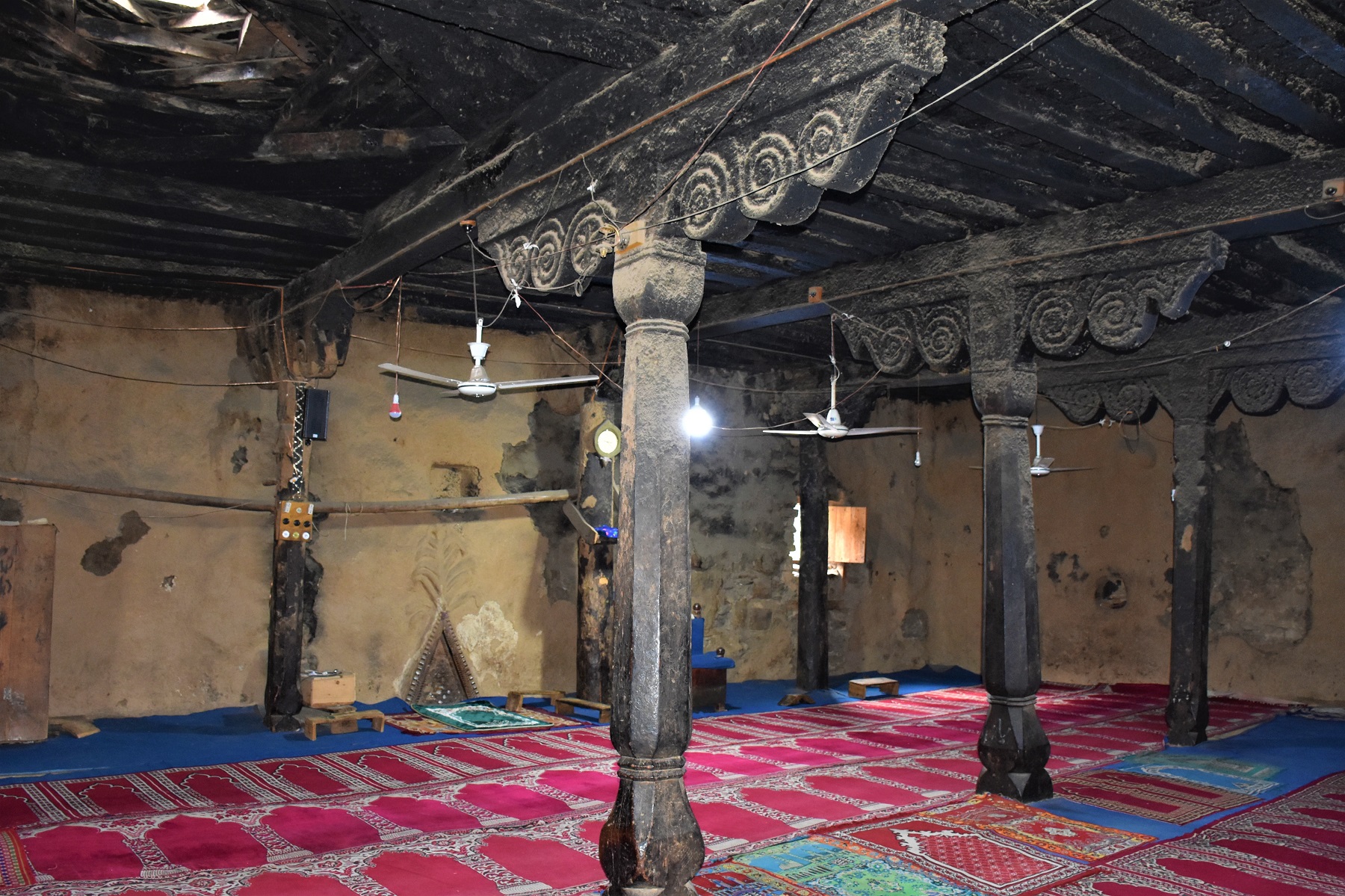
Through discussions, I came to know that about five hundred years ago the inhabitants of Tangir valley greatly venerated the cow. In fact, it can be said that cow-worship was prevalent amongst the population. The Tangir valley was divided into two parts, lower and upper, locally called ‘Rom.’ The lower valley was ruled by Shigli whose dominion began from Lorkah to Jaglot. The territory of Doro, the ruler of the upper valley or Gabar, started from the Darqali Pain to Koranga Bala extending to the Satil meadow, which was known for iron ore (locally called 'Chimar gu'). The remains of the fortress of Shigli can still be seen near Jaglot. Likewise, the remains of Doro’s villages and fortress are also found in Dorogah, which is named after him. Dorogah, a nullah, connects Tangir with Gayal Nullah in Darel valley. At the beginning of Dorogah and near Khip village are the remains of Shikari Thoki which are said to have been erected by Doro. There are also remains of the fortress near Dabas which are also associated with Doro. The ancient remains of the water channel in Gachhar Nullah are also associated with Doro. The water channel was excavated during the reign of Doro.
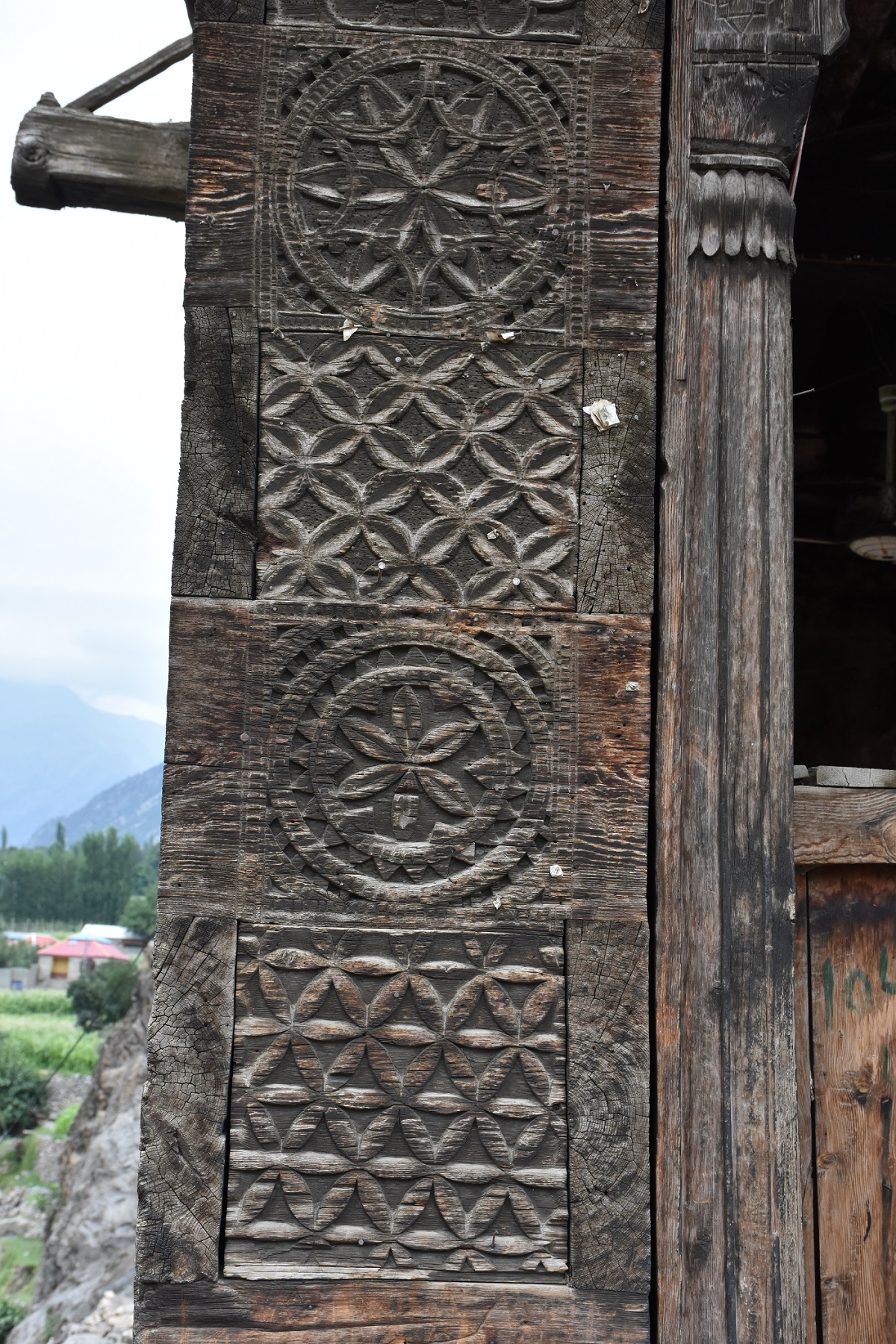
Both Shigli and Doro ruled their respective kingdoms until they were overthrown by Khachelo, Maguno and Sobo. Breno then challenged their rule, and killed Sobo whose descendants now live in Sobo Kot. He also killed Shigli, the ruler of the Lorakh and Jaglot Roms, who imposed heavy tax (Kalang) on the inhabitants of Gabar Rom. Breno came along with his friend Yagri from the lower Indus valley. Both Maguno and Khachelo were fighting over natural resource distribution. Breno persuaded both to amicably agree to the distribution of natural resources, which both accepted. Afterwards, Maguno was swept away in the floodwaters of Gachhar Nullah. Khachelo gave his daughter in marriage to Breno. Afterwards, Breno became the ruler of the Gabar Rom (area).
Breno was the ancestor of the Shins of the Gabar area in Tangir. It is believed that Breno was the first ruler who developed the indigenous system of natural resource management in Gabar in the Tangir valley. The descendants of Breno who embraced Islam now live in Darqali Pain, Darqali Bala, Phapat, Bagut, Dabas and Mushke. Khachelo, after whom Khachelogah is named, was the ancestor of the Kamin caste in the Gabar area, who now mostly live in Mushke village. The descendants of Doro live in Faruri village. Maguno had no male child but six daughters. The descendants of Yagri, the friend of Breno, live in Mushke.
These valleys, including Tangir, were used as routes by pilgrims and traders in the past. There are several stupas and fire altar images engraved on the boulders at the Shatial rock art site
Khami Kot was the principal fortified village in Gabar in Tangir. When the population converted to Islam in the 16th century, the Jami mosque was built by the residents of the village. Sufis saints from Swat converted the inhabitants of Tangir to Islam. Later when the population of Khami Kot increased, the prominent heads of their lineages moved to found new villages. From Khami Kot they moved to other villages where today the descendants of Doro, Khachelo, Sobo, Yagri and Breno are living. All of them founded villages in Gabar Rom.
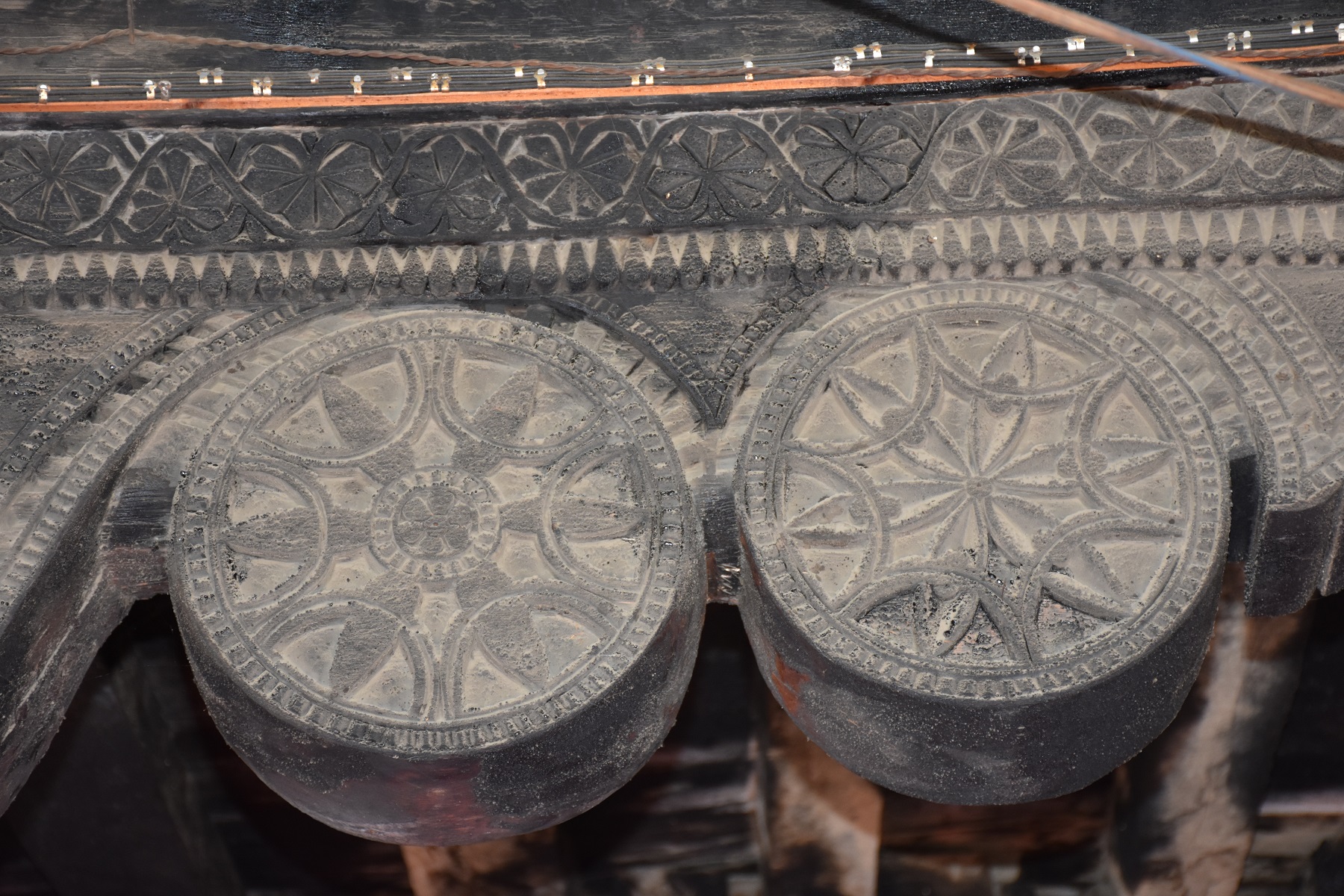
Now, Gabar Rom or the region in upper Tangir valley, occupies an important place in the annals of the valley. Even the term Gabar is interesting, which merits some attention and investigation by the scholars who are working on ancient religions in Hindu Kush. Based on my research among the communities in the Hindu Kush and Himalayas in northern Pakistan, I believe that this term is probably related to Zoroastrians. Fire worshippers or Zoroastrians were known by different names and the term Gabar was probably one among the lot. There is also a village with the same name in Darel valley. Right from Darel and Tangir to Indus Kohistan and Swat-Kohistan I noticed place names like Gabar, Gabrial etc. Even in Balochistan and Sindh ancient water reservoirs or ancient dams which are locally called Gabar band/ Gabarband or Gor band/Gorbandi are believed to have been built by the Gabars or Zoroastrians. Not much has been written on place names of northern Pakistan. I think some students of anthropology; sociology or comparative religion should do some research on ancient religions and place names in Northern Pakistan. I believe that with their findings and analyses many unanswered questions will be answered and many facts will come to light. These researches will further provide a springboard to young scholars to further investigate the ancient religions of these regions.
This shows that apart from Hindus, significant populations of Buddhists and Zoroastrians also lived in the Tangir valley. The Shatial rock art site showcases the presence of both religious communities in the region. And Tangir is not far away from Shatial. These valleys, including Tangir, were used as routes by pilgrims and traders in the past. There are several stupas and fire altar images engraved on the boulders at the Shatial rock art site. Even signs and symbols used in the vernacular architecture of the Tangir valley may provide many missing links about the ancient religions of these regions.
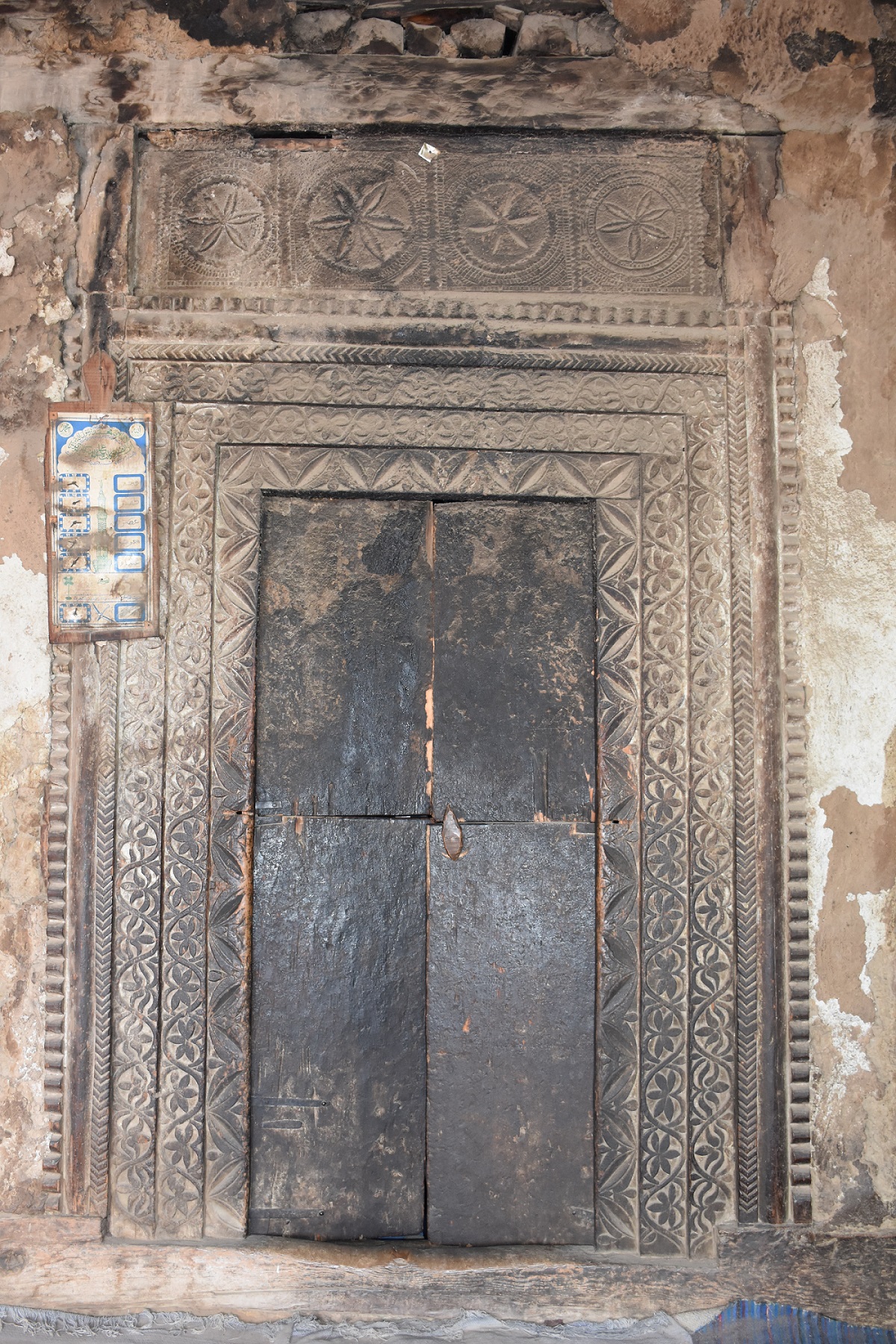
I visited all historic wooden mosques of Tangir including Diamer, Sheikh and Khamikot. I also heard that there were also historic wooden mosques in Phapat, Koranga, Dabas and Faruri villages which were rebuilt between 1980 and 1990. The Faruri mosque was noted for intricate wood carvings. It was demolished in 1982 and a new mosque was built by the villagers in 1983. A famous mason and woodcarver of Faruri village, Feroz Khan, built the mosque. I met him several times and enquired about the scheme of decoration and architecture of the old mosque. According to him, Faruri mosque was a real prototype of the Khami Kot mosque. Sir Aurel Stein during the reign of Pakhtun Wali Khan (1905-1917) visited some historic wooden mosques in Tangir. Paktun Wali Khan ruled Tangir, Darel and some valleys in Indus Kohistan from 1905 to 1917. He was killed by Tangiris in Lorakh village in 1917.
Sir Aurel Stein mentioned and provided a photo of the wooden mosque of Faruri in his book Innermost Asia Vol. 1. The old mosque of Faruri was probably built by Jaloti or his son Laskar, who were the descendants of Doro, the ruler of Gabar. The fifth generation of Doro namely Chutho, Soti, Yoshir, Dudoki and Dodar remained non-Muslims. From the sixth generation, Jaloti embraced Islam. The descendants of Doro known as Laskare, Mirzakhane and Butote live in Faruri village. Later some migrated to the Yasin valley. When Jaloti embraced Islam, either he or his son Laskar – after whom the Laskare lineage is named – laid the foundation of a mosque in Faruri village.
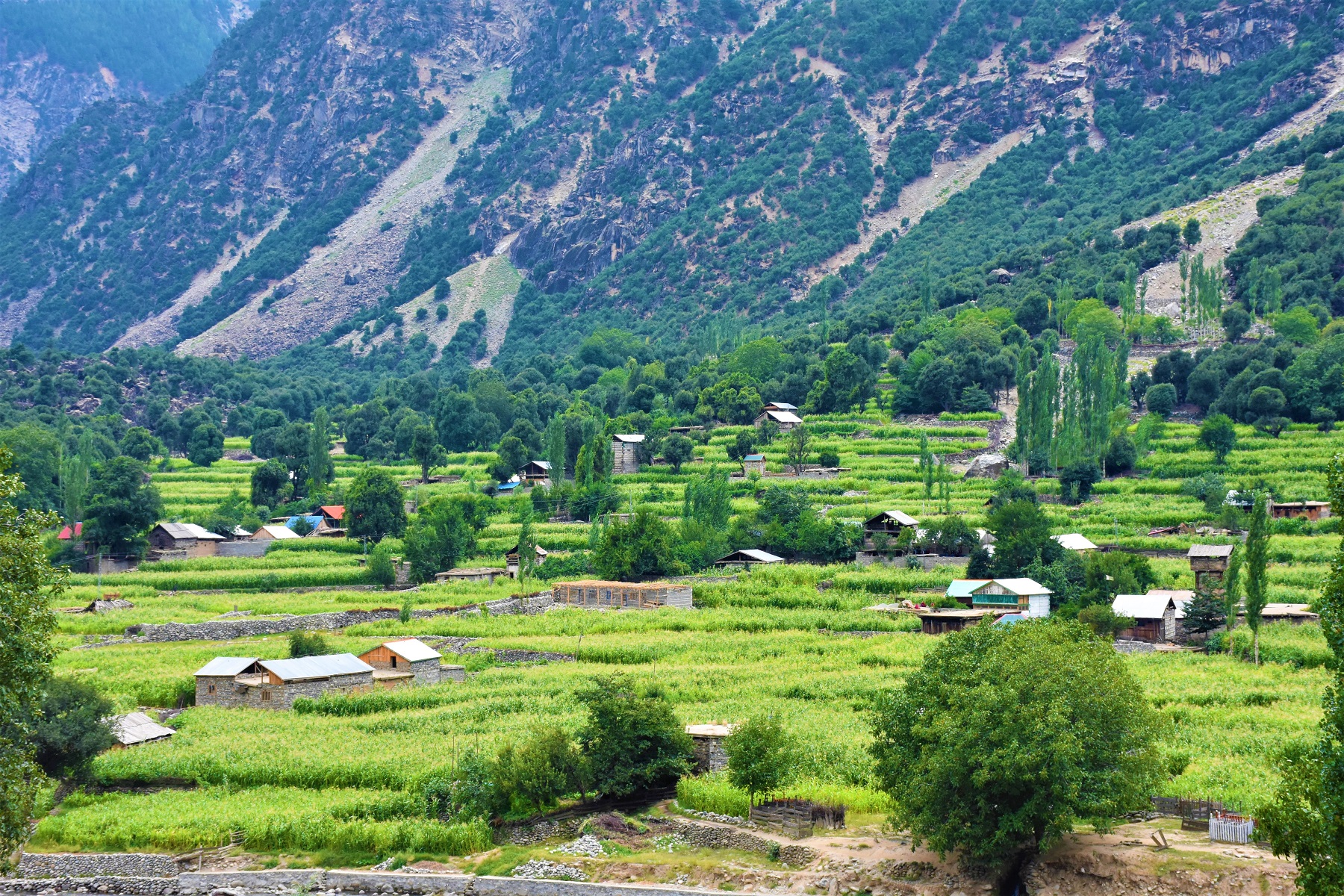
The oldest surviving mosque in Tangir is located in Khami Kot. All others have been rebuilt. The Khami Kot mosque is an identity marker of the Tangir valley. Mud, stones and timber were used in the construction of the mosque. It is located on the left bank of the Tangir river. The Jami mosque Khami Kot is noted for floral and geometric designs which are carved on the door, pillars, and arched entrances of the mosque.
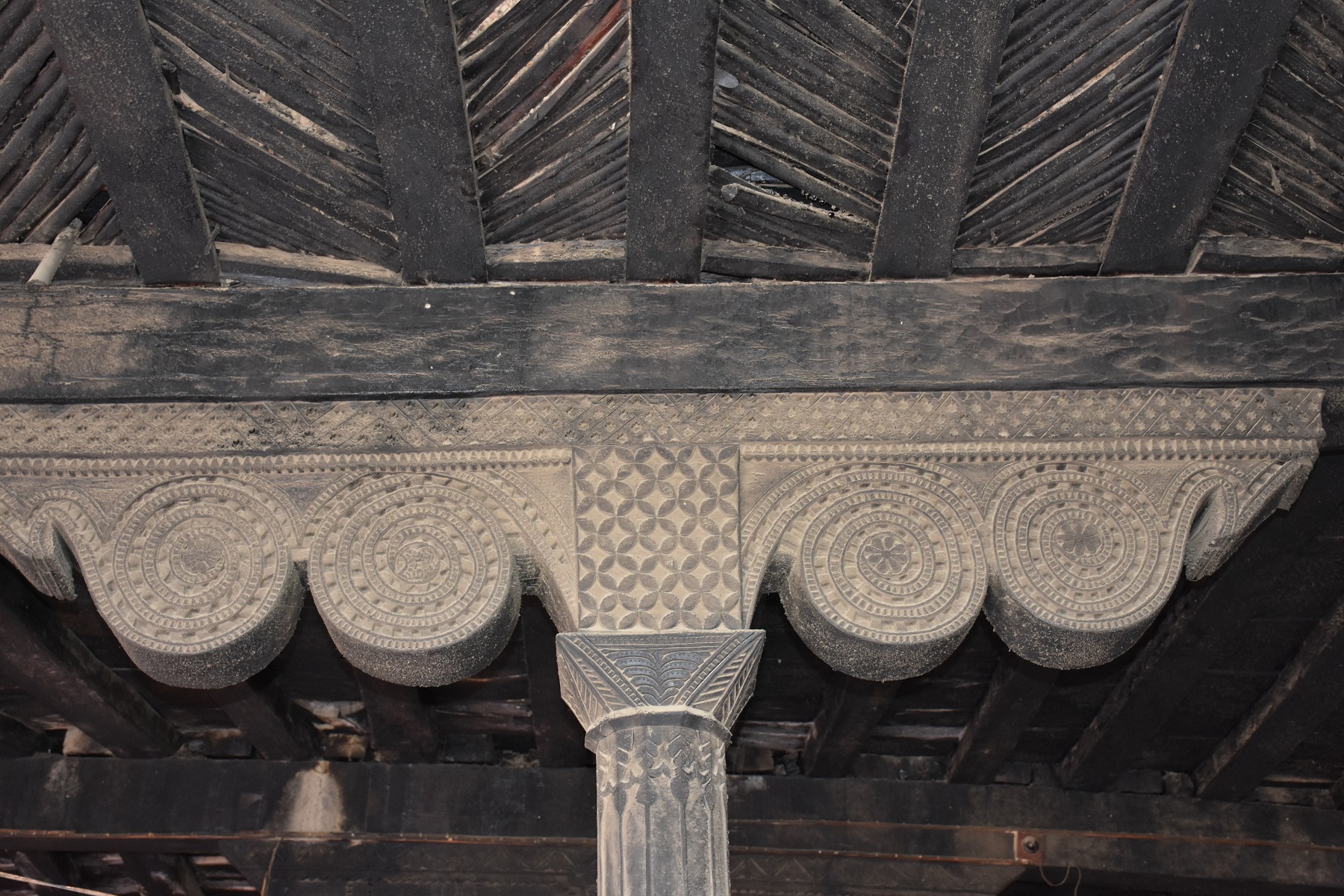
This mosque has a rectangular prayer hall, covered verandah, hujra and ablution area. The overall edifice consists of six arched openings on the south and two on the west. These are highly carved, presenting geometric and floral motifs. The roof of the verandah rests on four pillars with each pillar having bracket capitals with double volutes. An ornately carved door from the covered verandah opens to the main prayer hall. The roof of the prayer hall rests on nine square and octagonal pillars. The carvings on these pillars look dim now as smoke billowing out from the fireplace has blackened both the pillars and ceiling of the mosque.
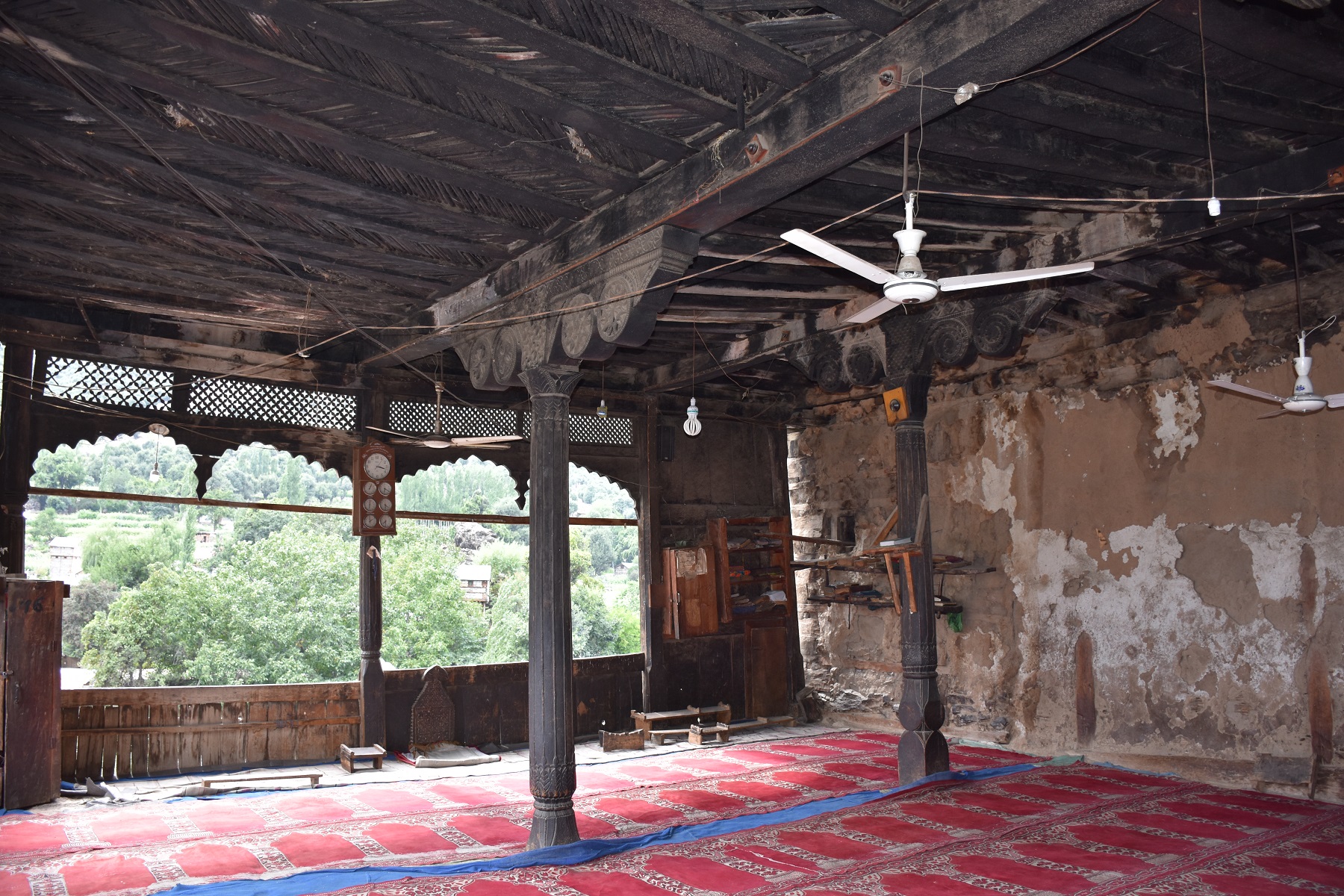
There are two mihrabs in the mosque, both of which are indicated by triangular wooden plaques. The western square corner pillar of the mosque is ornately carved, depicting geometric and floral motifs.
Newly built mosques in Tangir are greatly inspired by the decoration scheme of the Khami Kot mosque. The woodcarvers of Tangir take inspiration from the Khami Kot mosque while engravings doors and pillars.
To the east of the mosque are some wooden coffins which are noted for intricate wood carvings. There also used to be the Shikari (watch tower) of Dost Muhammad east of the mosque, which was a century-old structure that was demolished in 2009.
The author is an anthropologist. He may be contacted at zulfi04@hotmail.com. Excerpts have been taken from the author’s forthcoming book Cultural Heritage Along the Silk Road in Pakistan. All photos by the author

